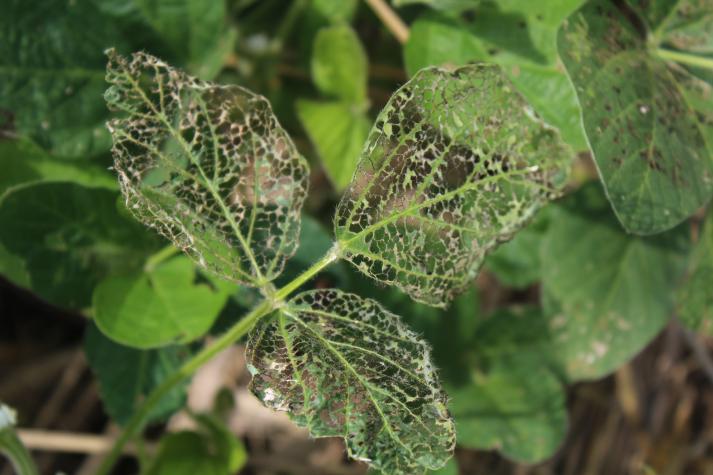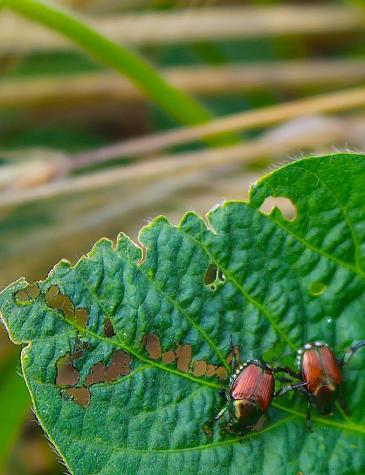COLUMBIA, Mo. – Missouri corn and soybean growers are reporting growing numbers of Japanese beetles in crops in recent weeks, says University of Missouri Extension state entomologist Ivair Valmorbida.
Valmorbida uses numbers from MU Extension’s Pest Monitoring Network, which gathers information from across the state
The highest numbers are reported in northwestern Missouri’s Gentry County. Numbers are also growing in northeastern Missouri. Japanese beetle adults are highly mobile, so Valmorbida recommends regular scouting of fields.
Adult Japanese beetles primarily feed on the upper canopy leaves, causing defoliation in soybean. Leaves become skeletonized with veins still intact.
In soybean, insecticide treatment decisions are based on growth stage and amount of defoliation, including injury from other defoliators because it is difficult to distinguish among the types of feeding injury.
Foliar insecticide treatment is recommended when defoliation is expected to exceed 30% before bloom (V1-R2 growth stages), 10% from pod development to pod fill (R3-R5) and 15% at the R6 (full seed) growth stage.
Japanese beetles are also considered a pest in corn crops. They focus on clipping corn silks necessary for pollination, which can lead to some yield reductions, says Valmorbida.
Valmorbida says foliar insecticide application is warranted in corn crops if the three following conditions are met:
- There are an average of three or more beetles per ear.
- Silks have been clipped to less than 0.5 inch.
- Pollination is less than 50% complete.
MU Extension’s pest monitoring website offers an alert system for Japanese beetles and other pests. Subscribe to alerts at Pest Monitoring Network or email ipm@missouri.edu.
Valmorbida also recommends the following publications:
- “Biology and Management of Japanese Beetle,” MU Extension, extension.missouri.edu/publications/g7412.
- “Biology and Management of Japanese Beetle in Corn and Soybean,” Oxford Academic.
Photos
Defoliated soybean leaves
Missouri soybean and corn producers report increasing numbers of Japanese beetles. Here, defoliated soybean leaves show the beetles’ presence. Photo by Linda Geist.
Japanese beetles
MU Extension state entomologist Ivair Valmorbida recommends scouting for the presence of Japanese beetles. Photo by Linda Geist.

